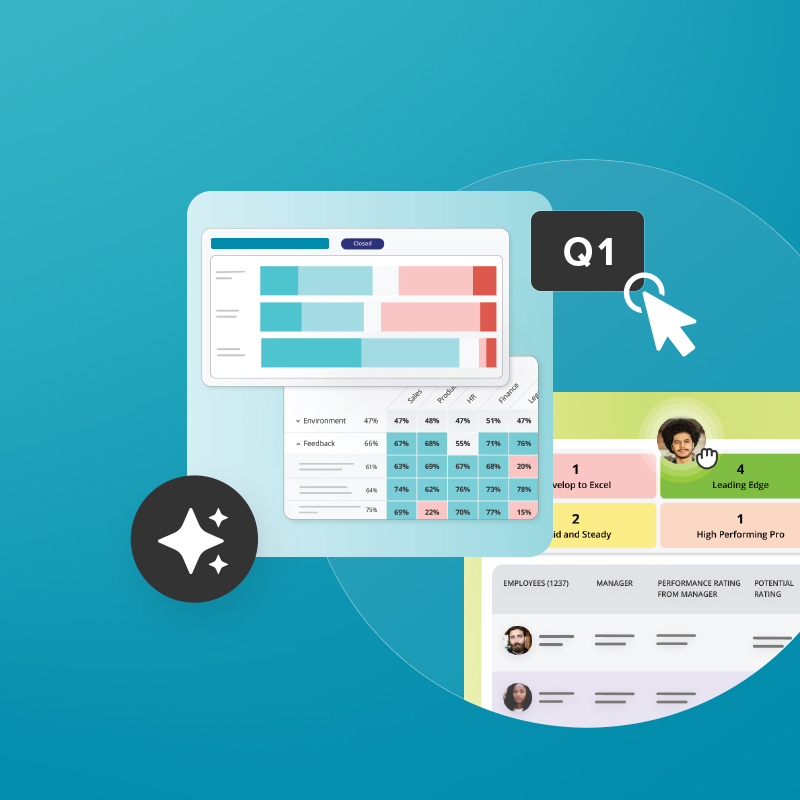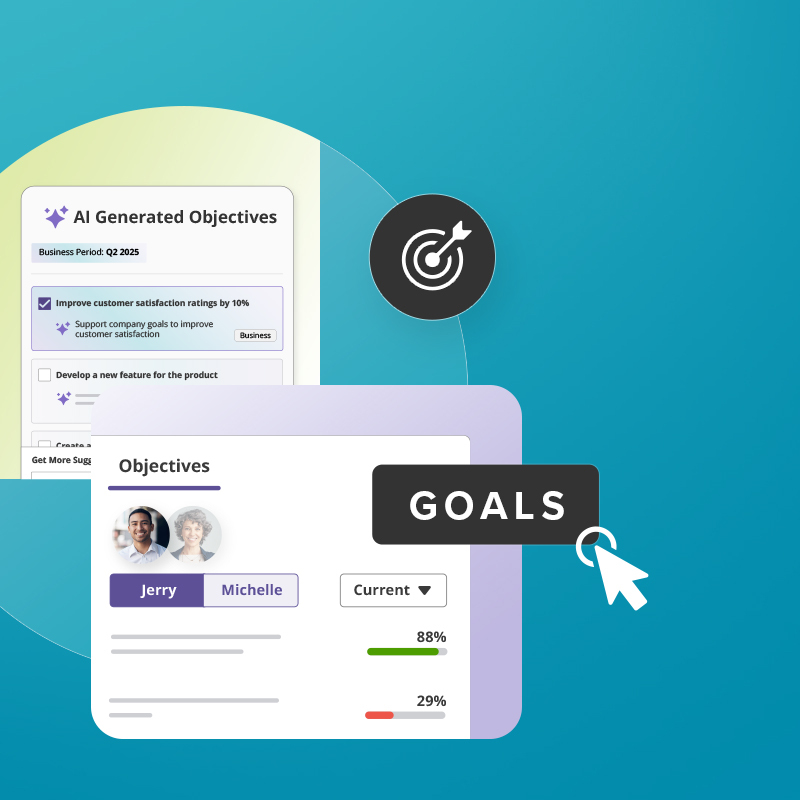Annual performance reviews have long been the standard for evaluating employee performance. However, as the work environment continues to evolve, they’re increasingly seen as outdated — especially by employees.
There is a dangerous disconnect between how leaders perceive performance management and the actual experience of employees. According to Betterworks’ 2024 State of Performance Enablement report, while executives and HR leaders might give performance management an A+, 44% of employees still see it as a significant failure.
That’s why some forward-thinking companies are evolving their performance management processes to meet modern demands. Companies like Apple and Block aren’t just getting rid of annual reviews. They are using new, creative ways to enable performance that fits their culture and focus on growth and engagement.
Learn why businesses are replacing annual performance reviews with continuous feedback systems, and how to implement this system to enable performance in your organization.
The disconnect between annual reviews and modern work
Annual reviews often fail to keep up with the demands of modern work environments. Explore some of the reasons why these traditional evaluations no longer align with the needs of today’s workforce, and how to incorporate alternatives to performance reviews instead.
One-size-fits-all doesn’t work anymore
The traditional approach to performance appraisal — annual reviews — operates on a one-size-fits-all model, which simply doesn’t align with today’s diverse and dynamic workforces. Employees work in a wide range of roles and team structures, each requiring a unique approach to support and evaluation.
The outdated structure of annual performance evaluations often leads to a mismatch between the feedback being provided and the needs of employees, reducing their engagement and hindering growth. Delayed feedback is often outdated and unusable. That’s why performance enablement moves away from annual reviews to embrace more flexible and individualized approaches. This shift is necessary to accommodate the variety of working styles that exist today and to ensure that managers can provide timely and actionable feedback that truly resonates with each individual.
The cost of waiting until year-end
Delaying feedback until the end of the year has tangible downsides. When managers wait until year-end reviews to address performance issues or offer praise, they miss critical opportunities for growth, goal alignment, and improvement throughout the year. Employees need timely recognition and constructive criticism to continuously grow — not feedback that comes too late to be useful.
Our 2024 State of Performance Enablement report found that employees who receive ongoing feedback are three times more likely to feel they can perform their work well and are significantly more likely to see a path for internal career development. Adopting a more dynamic performance review process can help align employee goals more effectively, keep them engaged, and avoid dissatisfaction that leads to higher turnover.
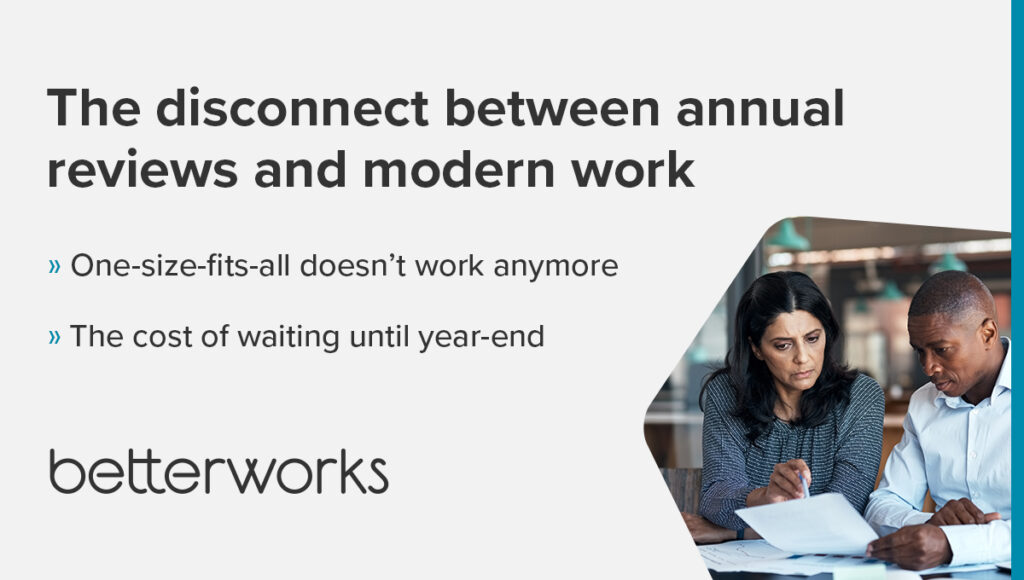
How continuous feedback reshapes engagement and growth
Continuous feedback offers a more effective way to engage employees and promote professional growth. Find out some of the ways personalized, ongoing feedback can transform employee performance and professional development.
Personalized and timely feedback as a driver for engagement
Today’s employees want timely, specific, and personalized feedback. Annual employee performance reviews combine all feedback into a single session, where employees are categorized across a standardized range from “fails to meet expectations” to “exceeds expectations.” This does not recognize individual achievements throughout the year or help with challenges as they happen.
Modern performance management tools, on the other hand, allow for tailored feedback in real-time, driving better performance and a multitude of other benefits.
“Betterworks has found that performance enablement impacts far more than performance. It affects engagement, productivity, belonging, inclusion, trust, and a host of other soft sentiments,” said Betterworks CEO Doug Dennerline in an article for Fast Company. “Data from our 2023 benchmark report shows that employees who think their performance reviews are fair and equitable are more engaged (82% vs. 60%) and productive (71% vs. 57%) than employees who see reviews as unfair.”
The research is clear: When employees perceive their reviews as fair and equitable, employee engagement and productivity increase.
If you’re looking to improve your feedback skills, watch this video on “How to Give Feedback to Employees” to learn practical tips for making feedback timely, personalized, and effective.
Building a culture of real-time growth
Moving beyond annual reviews allows you to go beyond simply evaluating past performance to fostering ongoing growth. Continuous feedback helps employees develop their skills, address challenges, and seize opportunities for growth throughout the year, rather than reacting to outdated goals or past mistakes. This shift helps create a culture of learning, where growth and improvement are valued by the company and are a part of everyday work.
It’s worth noting that an annual review can still serve as an anchor point within a series of ongoing check-ins. When used in this way, annual reviews can provide a broader overview of employee progress while maintaining a continuous feedback loop. To make the check-ins more effective, managers should be equipped with annual performance review samples and annual performance review sample comments. Offer additional training in best practices for performance reviews to make sure these meetings support future-focused action plans rather than just being a look backward.
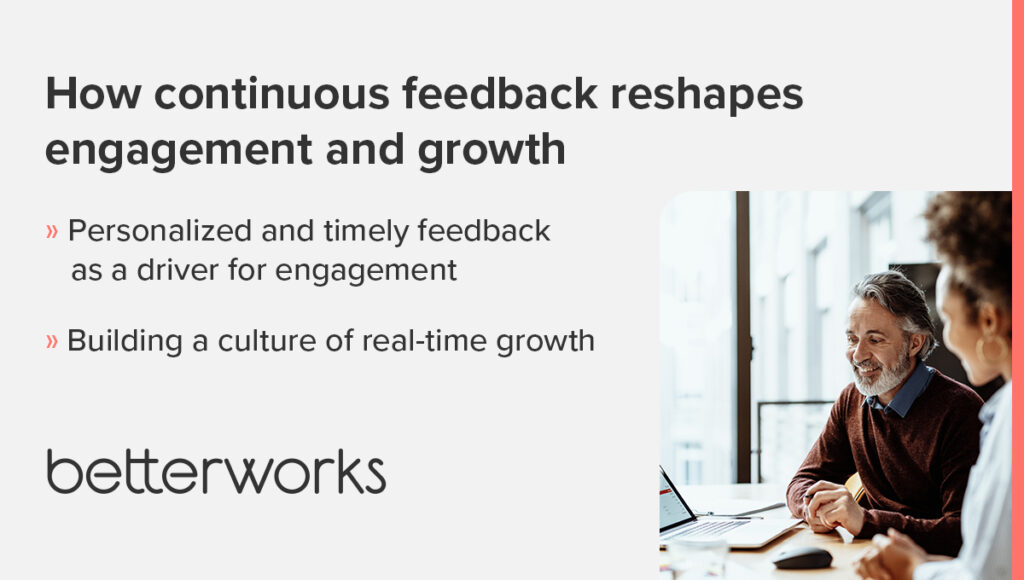
Moving to a dynamic performance management system
You need a dynamic performance management system to effectively replace static annual reviews. Find out how fluid goal-setting and team-based evaluations can help transform your employees’ performance for the better.
Fluid goal-setting and real-time adjustments
Continuous performance management is more than frequent feedback. Keeping goals top-of-mind allows managers and employees to adapt goals as needed to match evolving business priorities. Dynamic goal-setting allows for adjustments to ensure that employees are always aligned with the highest-impact tasks, even as objectives change. A flexible system keeps employees on track, continuously improving, and motivated to contribute to the company’s success.
Team-oriented check-ins to drive collective success
Modern work is often built around teams rather than individual performers. Unlike annual reviews, which usually focus on an individual evaluation, frequent team-based performance check-ins can help track team progress and address challenges in real time. This approach is especially useful for cross-functional teams, where collaboration and regular updates are essential to achieving shared objectives.
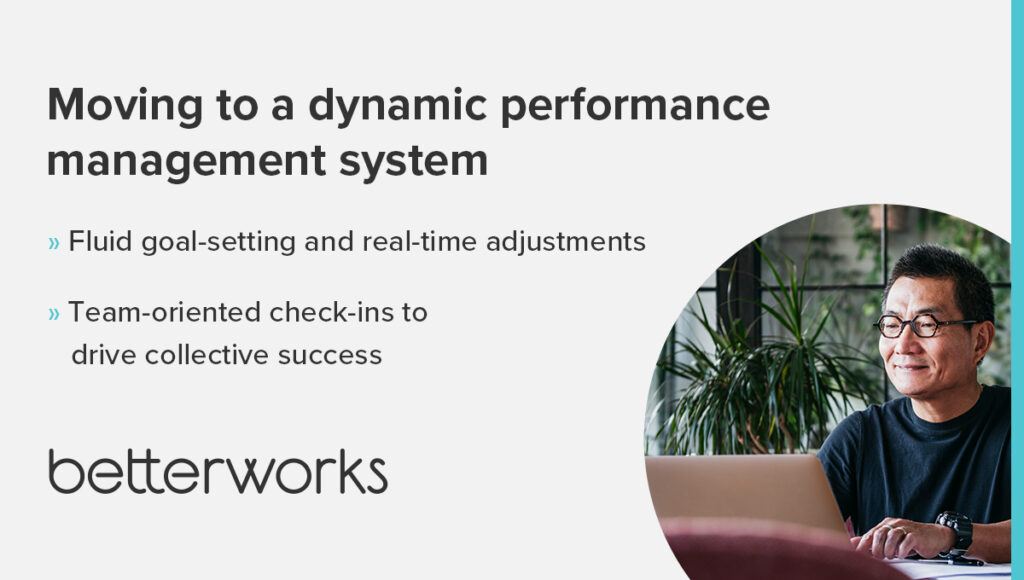
Ditch annual reviews for a more effective performance strategy
Moving away from annual reviews isn’t just about eliminating an outdated process. Reimagining performance management provides an opportunity to adopt new habits that fuel higher overall performance.
To truly support employee development, it’s time to adopt a more dynamic system of continuous feedback, real-time goal-setting, and frequent check-ins. This approach fosters growth, aligns employees with evolving priorities, and ultimately drives greater engagement and productivity across the organization.
Want to learn more? Check out our Performance Enablement Resource Hub.
All your performance management resources in one place!



